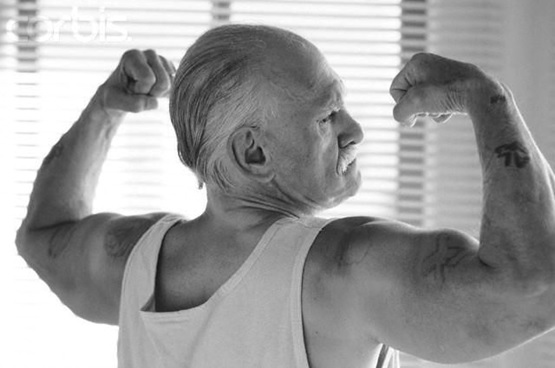
Another year older, another year weaker. Did you know that every year from the age of 40, your strength declines anywhere from 1.5%-5%? This is not good news for those wanting to be shredded seniors. Luckily there are things we can do to reduce the severity of this natural decline. Keep reading to learn about why we lose muscle as we age and what we can do to prevent this from ruining our quality of life.
Sarcopenia
The technical term for age-related muscle loss sarcopenia. As we get older, our muscles lose their ability to contract efficiently and we aren’t as strong as we were in our prime. This is why elderly people hurt themselves so often. Weaker legs and lack of agility make you far more injury prone. It is estimated around 1 in 3 people over age 65 have a bad fall every year. The frailer you are, the more likely you are to need an ambulance after a little topple down the stairs. In order to prevent this from happening to you, it’s important to train your muscles frequently and give them the nutrients they need to repair.

What Changes?
Not only do our muscles lose their ability to efficiently contract, they also change in fibre type. Human bodies contain a mixture of type 1 and type 2 muscle fibres. Type 1 (aka slow twitch fibres) are responsible for small contractions. You use them to maintain posture and complete small movements that don’t require much power. On the other hand, type 2 fibres are of the fast twitch variety. They contract quickly and powerfully but also fatigue fast. Sprinters and weightlifters tend to have a greater distribution of type 2 fibres as they frequently perform explosive movements. The older we get, the less type 2 fibres we have. This means we aren’t as powerful as we used to be and big movements like jumping will feel much more strenuous.
Why Does This Happen?
The cause of sarcopenia is multifactorial, meaning there are a few different reasons why it happens. Partly, it is due to changes in hormones. Elderly people produce less testosterone which leads to a decline in muscle growth and maintenance. On top of this, we tend to be less active in our golden years. Sedentary lifestyles contribute to muscle atrophy. As the saying goes, use it or lose it. Another reason our strength declines is due to changes in brain and nerve function. In order to perform coordinated physical movements, our brain needs to work in harmony with our muscles. Disrupted communication between the nervous system and the body is therefore another reason older people aren’t as athletic. Finally, ageing bodies are not very good at synthesising new proteins. Lack of protein means lack of muscle. All of the factors combined explain why we experience sarcopenia and give us insight into how we can mitigate its impact.
What Can We Do To Stop It?
We can’t stop sarcopenia altogether but we can reduce its severity. Your first port of call should be exercise. If you don’t train your muscles, they will atrophy. A general recommendation would be at least half an hour of daily exercise. This could be swimming, yoga, using gym machines or biking. It’s important to include a mix of aerobic, strength and balance training. A variety of training modalities is the best way to ensure you keep the heart, body and mind healthy. The next step is to nail your nutrition. Older bodies have a harder time turning protein into muscle. This means you need to eat high protein foods multiple times throughout the day. Doing so will put you in the best position to retain muscle. Protein oats for breakfast, a few high protein snacks throughout the day plus meat and veggies for lunch and dinner would be a good routine to follow. Finally, the importance of sleep can not be understated. Getting enough zzz’s is vital for muscle recovery. Hitting the sack early is so beneficial for our mental and physical health. Plus it’s not difficult to do. Who doesn’t love a good nap?

Conclusion
A significant decline in muscle strength as we age is not unusual but not totally inevitable either. Of course more research needs to be done but the current literature shows that nutrition and exercise are our best weapons against sarcopenia. If you want to make the most of your golden years, keep up your strength training, sleep well and eat a balanced diet. Statistics show that up to 60% of Kiwis over 65 suffer injuries after a fall. Don’t let that be you.
Written by Lauren Carruthers
